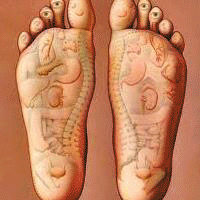Losar festival is celebrated by Tibetan people. It is marked with ancient ceremonies that represents the struggle between good and evil, by chanting, and by passing fire torches through the crowds.
These are the main celebrations:
Day 1: Lama Losar

The devout Tibetan Buddhist begins the new year by honoring their dharma teacher. Guru and disciple greet each other with wishes of peace and progress. It is also traditional to offer sprouted barley seeds and buckets of tsampa (roasted barley flour with butter) and other grains on home altars to ensure a good harvest. Laypeople visit friends to wish them Tashi Delek -- "auspicious greetings"; loosely, "very best wishes."
His Holiness the Dalai Lama and other high lamas gather in a ceremony to make offerings to the high dharma protectors (dharmapalas), in particular the dharmapala Palden Lhamo, who is a special protector of Tibet. The day also includes sacred dances and debates of Buddhist philosophy.
Day 2: Gyalpo Losar

The second day of Losar, called Gyalpo or "King's" Losar, is for honoring community and national leaders. Long ago it was a day for kings to hand out gifts at public festivals. In Dharamsala, His Holiness the Dalai Lama exchanges greetings with officials of the Tibetan government in exile and with visiting foreign dignitaries.
Day 3: Choe-kyong Losar

On this day, laypeople make special offerings to the dharma protectors. They raise prayer flags from hills, mountains and rooftops and burn juniper leaves and incense as offerings. The dharmapalas are praised in chant and song and asked for blessings.
This ends the spiritual observance of Losar. However, the subsequent parties may go on for another 10 to 15 days.
The celebration of Losar predates Buddhism in Tibet and can be traced back to the pre-Buddhist Bön period. The festival is said to have begun when an old woman named Belma introduced the measurement of time based on the phases of the moon. This festival took place during the flowering of the apricot trees of the Lhokha Yarla Shampo region in autumn, and it may have been the first celebration of what has become the traditional farmers' festival. It was during this period that the arts of cultivation, irrigation, refining iron from ore and building bridges were first introduced in Tibet. The ceremonies which were instituted to celebrate these new capabilities can be recognized as precursors of the Losar festival. Later when the rudiments of astrology, based on the five elements, were introduced in Tibet, this farmer's festival became what we now call the Losar or New Year's festival.





0 komentar:
Posting Komentar
Feel free to drop your comment.. Thanks! :D